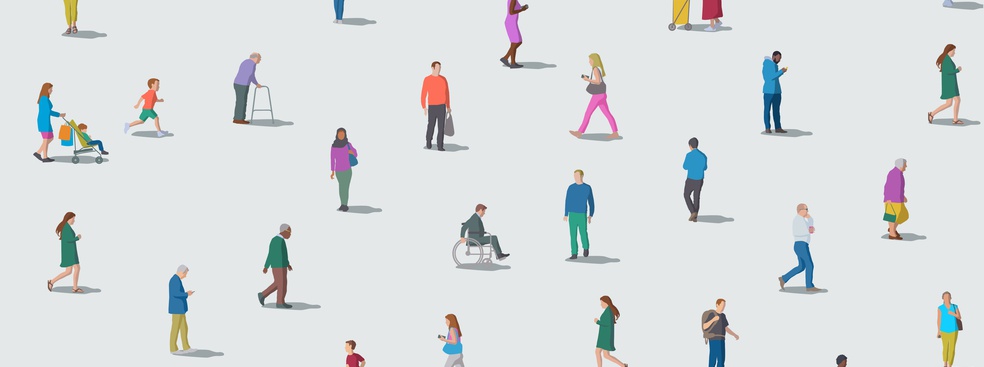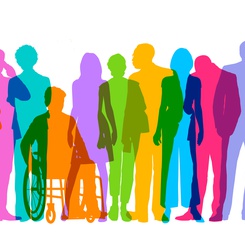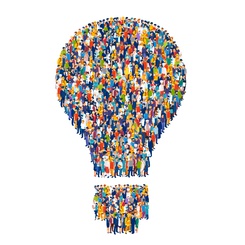With ESSEC Knowledge Editor-in-chief
Recent years have seen increased discussion about fighting discrimination in all forms, including types of discrimination that have previously flown more under the radar, like ableism (discrimination against those with disabilities). We are also more sensitized to intersectionality theories, which explain how social identities (like gender) reinforce each other. We are all much more than a sum of our parts, and our different experiences shape who we become and how we experience the world - and how the world treats us. In a new study, Estefania Santacreu-Vasut (ESSEC Business School) and Huali Wu (PhD Candidate in Economics at ESSEC Business School) explore the intersection of disability and gender in the Chinese labor market, finding that disabled women had the lowest annual earnings and that this could be traced back to being disabled and a woman - and that this effect was greater than the sum of disadvantages from disability and gender.
Disability and gender: 1 + 1 does not equal 2
In France, the government estimates that 5.7 million people - 14% of the working population - live with a disability. With an aging population and more chronic diseases (including long Covid), this number could increase in coming years. Disability is not only damaging to one’s health, but also to one’s economic prospects. European Union data estimates that 21.1% of the population with a disability faced poverty, compared to 14% of the able population. Data also suggests that this tends to be worse for women, with a 2018 British study showing that median hourly pay figures were £13.2 for non-disabled men, £11.67 for disabled men, £11.05 for non-disabled women, and £9.93 for disabled women (Office for National Statistics, UK). Are disabled women exposed to an extra penalty, beyond the sum of penalties associated with gender and with disability?
To explore and quantify the intersection of disability and gender, the researchers provide a conceptual framework, as existing empirical literature in economics tends to treat sexism and ableism separately. This is likely due in part to the difficulty of exploring and empirically quantifying intersectionality, but it is essential information so that policy-makers can draft policies that benefit vulnerable populations at the lowest cost.
The research team used an inter categorical approach to compare outcomes for different combinations of identity dimensions, for example comparing disabled women with non-disabled women, disabled men with non-disabled women, etc. This allows for a more complete picture of how both gender and disability impact people’s experiences. Using statistical methods, they were able to break down how much of the differences in labor earnings was attributable to different factors, like disability and gender but also factors including education, origin, and occupation. They compared the outcomes for different groups to the earnings of non-disabled men - the reference group. By comparing outcomes, it’s possible to understand the “intersectionality penalty” - what happens when you have multiple identities that face discrimination.
The case of China
To look at this in the “real world”, the research team studied the Chinese labor market, as inequalities due to gender and disability are drastic. It’s a particularly interesting case as there are 85 million disabled people in China as of 2019, a large gender wage gap, and fewer policies to combat sexism and ableism. They used data from the 2010 China Family Panel Studies - a biannual, longitudinal survey run by the Institute of Social Science Survey of Peking University. To measure disability, they examined whether individuals reported they could do certain activities independently (like walking 300 meters, cooking, taking public transportation, and household chores): if they answered no to these questions, they were classified as having a disability.
As they predicted, non-disabled men had the highest average earnings and the highest rates of advanced education. They found that disabled women had the lowest salaries and experienced the most discrimination on the job market. They also had the least education and were largely in lower pay jobs and living in lower-income areas. Disabled women faced significant barriers to access even middle manager jobs, while disabled men bumped against this glass ceiling when it came to senior manager jobs. Additionally, disabled men with similar educational backgrounds and jobs to non-disabled men earned similar income levels, but this was not the case for disabled women.
What’s more, even after statistically controlling for education, occupation, and industry, disabled women still faced a wage gap, suggesting the negative effect of ableism and sexism in play. With non-disabled women also facing a significant wage gap, the data suggests that gender discrimination was stronger than ableism - this is where the intersectionality penalty comes into play. This demonstrates the importance of taking people’s different social identities into consideration to get a full picture of how our multidimensional identity impacts our lives.
Takeaways
-
Policy-makers should consider intersectionality when drafting policies to ensure just outcomes for all citizens- and gender identity needs to be part of the package
-
Initiatives for integrative disabled people into the workforce need to take gender into account, rather than being gender-blind, given the additional obstacles disabled women face
-
While policies should include skill-building support for disabled individuals, this is not enough to eliminate the pay gap, and so policies should also address the “demand” side of the equation by having legislation that focuses on employer hiring and promotion practices
References
-
https://www.strategie.gouv.fr/english-articles/employment-persons-disabilities-and-business-performance
-
Institute of Social Science Survey, Peking University (2015). China Family Panel Studies (CFPS). Version V42. Peking University Open Research Data Platform. doi: 10.18170/DVN/45LCSO. url: https://doi.org/10.18170/DVN/45LCSO.









